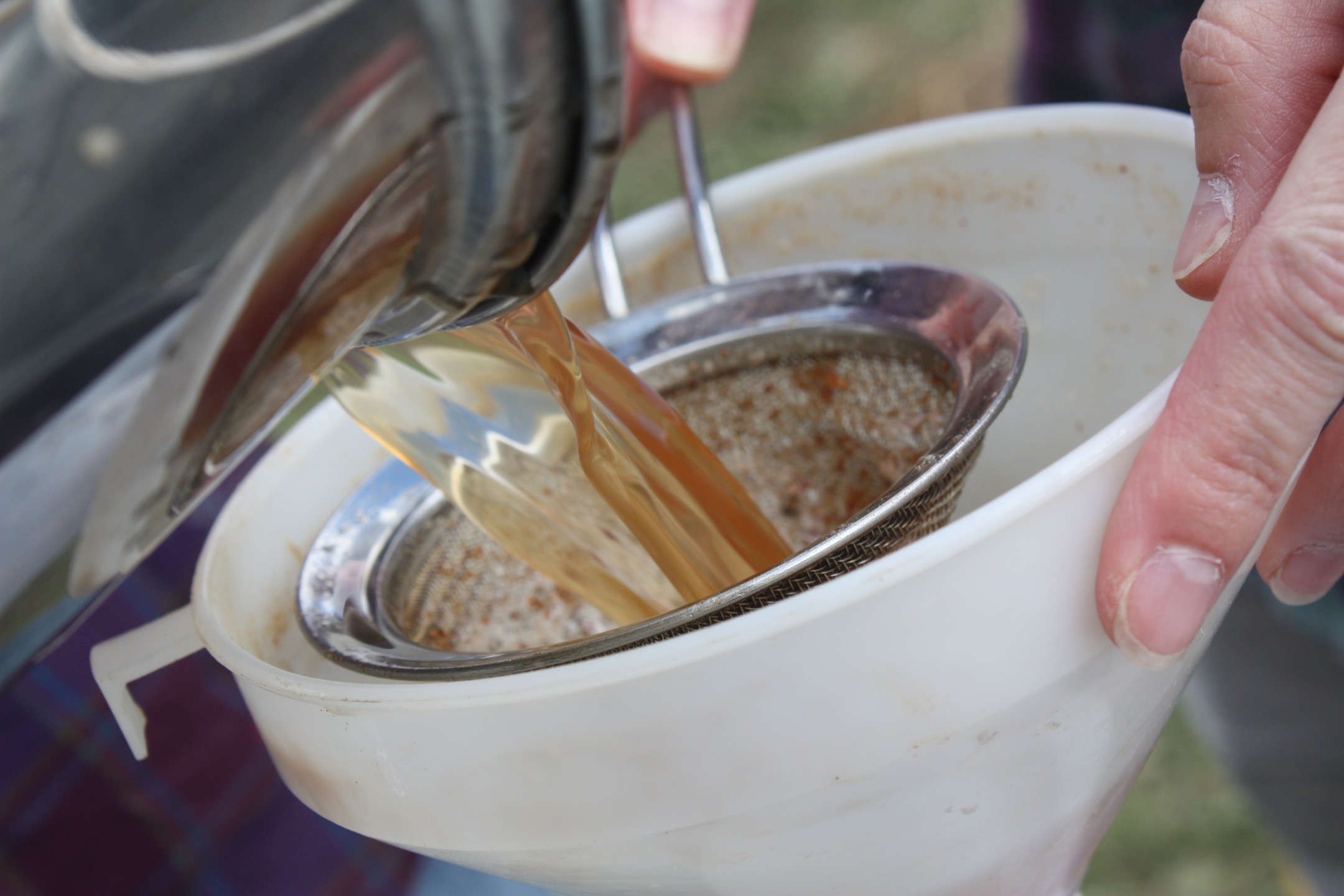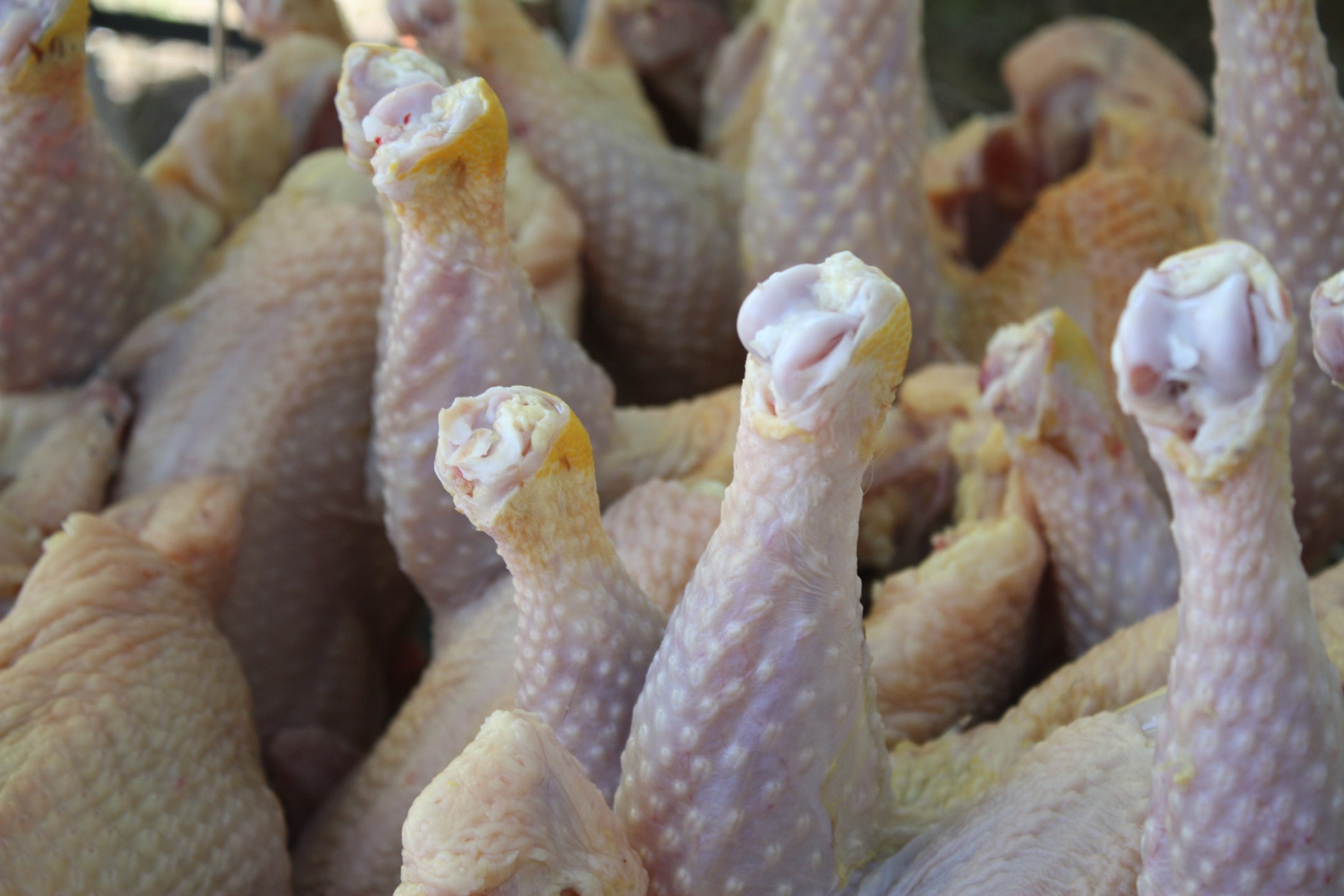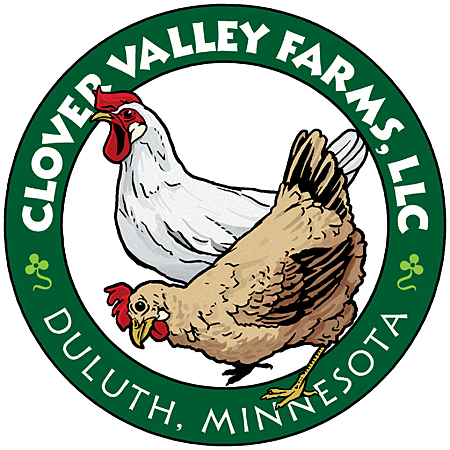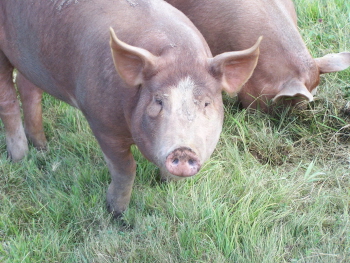Marketing
Models
Initially Jeff and Cindy sold products at a farmers’ market; sales went well, and they felt it was a good experience for making initial customer contacts. Some of their farmers’ market customers, for example, became ongoing egg customers. They switched to a focus on direct sales, however, because they felt the logistics of packing things up and devoting Saturdays to being away from the farm were not a good match for their lifestyle. The farmers’ market was also not a good fit for their approach to meat sales.
Jeff and Cindy now sell products directly to customers and have a wholesale account. They also started using a Community Supported Agriculture (CSA) marketing model for eggs in 2011, which is working well. They may try a CSA model for fall fruits in the future. Apples have good storage ability, and Cindy and Jeff see good potential for value-added apple products that could be marketed on an ongoing basis.
 |
Although Cindy and Jeff have customers coming to the farm for product pick-ups, they don’t anticipate setting up an on-farm store in the near future, as they like their privacy. |
They considered offering Community Supported Agriculture (CSA) subscriptions for meat, but shied away from this idea after conducting a customer survey. |
 |
Farmer’s Perspective: Lessons Learned Cindy and Jeff believe that ongoing communications with customers and honest explanations about pricing have helped them establish a loyal customer base. In 2010, for example, they explained what they had learned about the extra labor involved in processing ducks in 2009 (see Production > Harvest & Processing > Poultry) and how they needed to increase duck prices as a result, and they still sold out. In 2011, organic feed costs jumped up by 30%. Cindy and Jeff used an online survey to ask customers if they’d prefer to see a change in practices, such as the use of non-organic or transitional feed instead of certified organic feed, in order to keep costs down. The overwhelming response was that customers wanted their practices to stay the same and would pay more for the products. Cindy and Jeff adjusted their egg and meat prices according to feed costs, and 2011 orders have been strong. |
Jeff and Cindy took advantage of their customer base to get feedback on customer satisfaction and ideas such as offering a meat CSA. They used the online tool Zoomerang, and print copies for customers without email, to conduct a customer survey in 2009 (Appendix IV, PDF 31 kb). They received 58 responses out of a customer base of around 100. Jeff and Cindy were interested to learn that their customers liked the concept of a meat CSA but not the details. Few people said they’d actually subscribe, generally because of widely varying preferences in the amounts and types of meats that they like to eat. Although Jeff and Cindy have heard success stories about meat CSA models from other producers (largely beef) and may explore the option again in the future, they felt they could not offer a good fit for their customers at this time.
 |
 |


